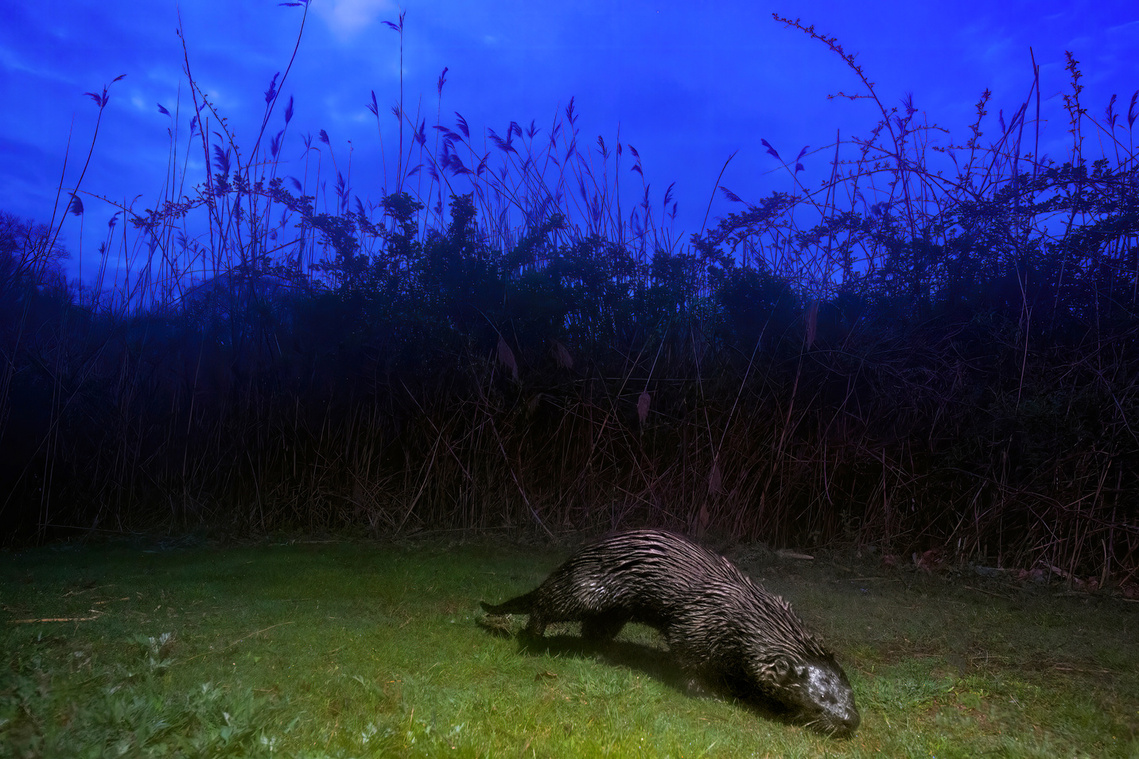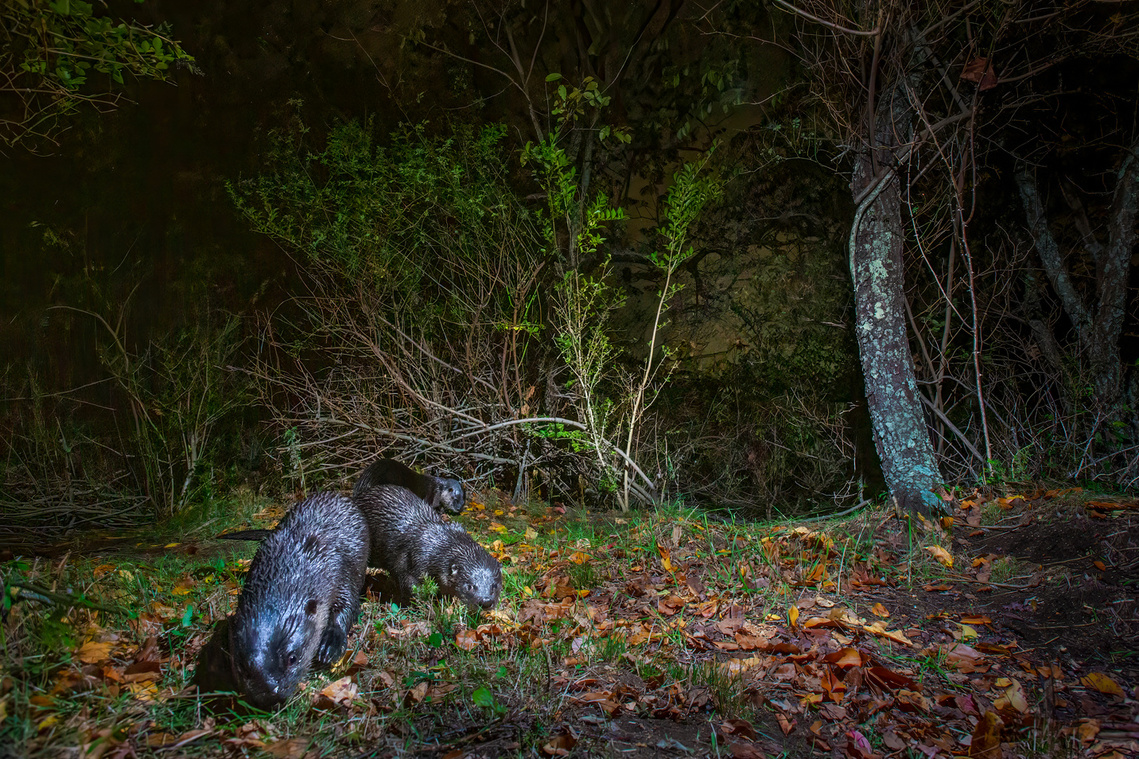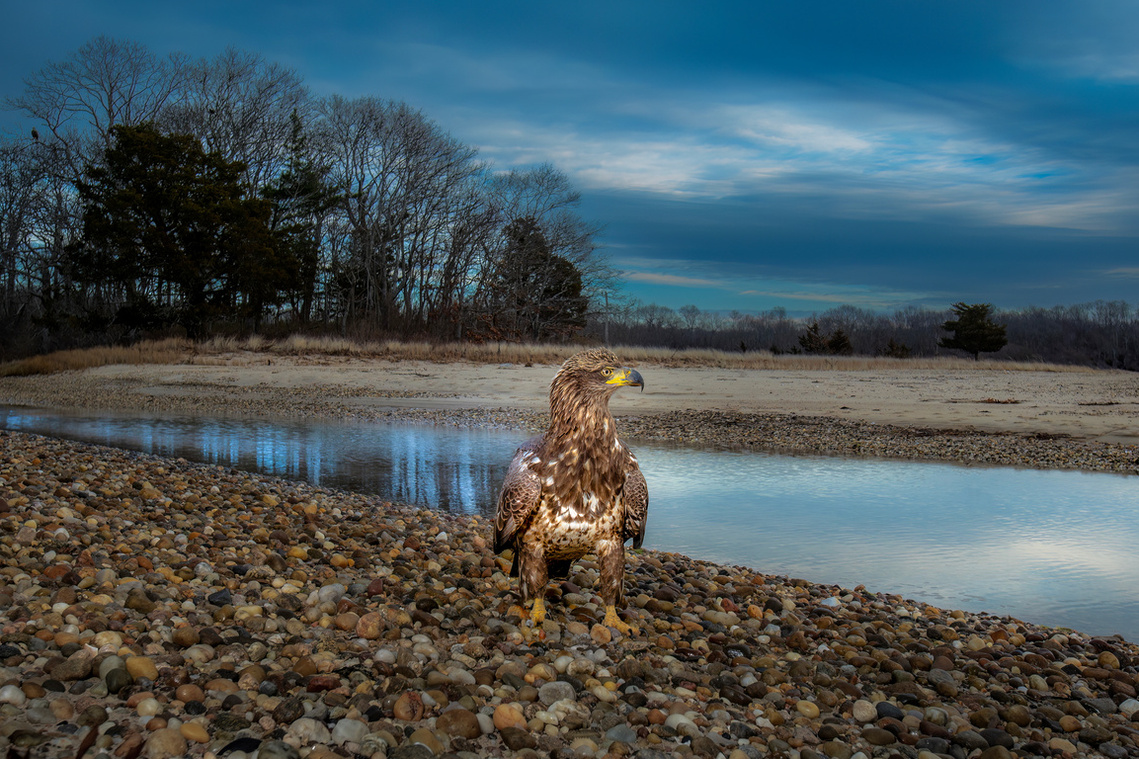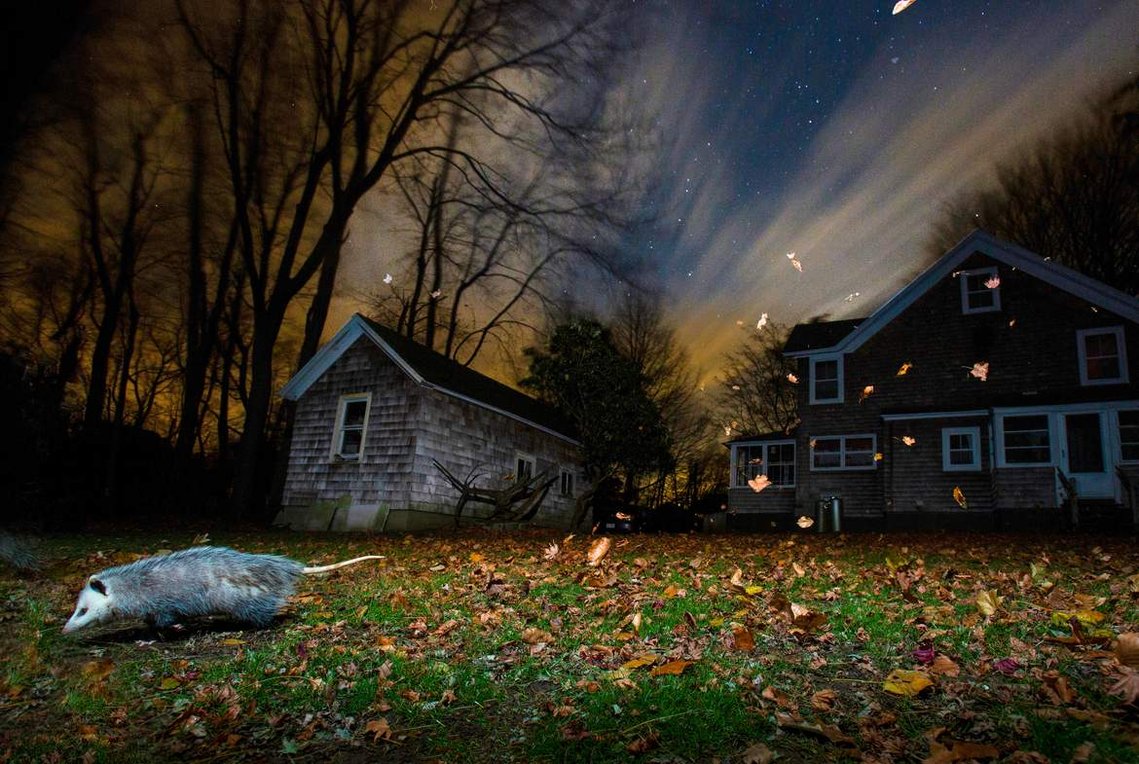The Re-Wilding of Long Island. Long Island is experiencing something of a recovery and return of marine and land animals. It's a fragile and exciting moment that hinges on our nurturing of this renewal. I'll be attempting to document as much as I can with camera traps and traditional photography.
North American River Otter, Shelter Island, NY. They have been swimming east from Nassau County and west from Fisher's Island, after fur trapping, habitat destruction, and water pollution dwindled their numbers....next stop the Hamptons! Is the return of this 3-4 foot, 10-30 pound mammal a harbinger of increasing good water quality? Is it about the plentiful food supply due to the regulation of Atlantic Menhaden? According to the National Zoo, otters have a low tolerance for polluted water. They are considered by some scientists to be a good indicator of aquatic habitat quality. So think of the otters as your riparian art critic...the more they gather in our creeks, marshes and bays, the better the water quality. And that's important for all of us.
Above and below are at a scenting station the East End of Long Island.
Bald Eagle, Shelter Island, NY. By the time DDT was banned in 1972 the breeding population of eagles in New York was down to one pair. The chemical caused eggshells to be so thinned the embryos would die. The charge to ban DDT in New York State started with Long Island farmer Marjorie Spock's lawsuit around 1957. She didn't win, but she did receive a life altering call from the writer Rachel Carson, mother of the environmentalist movement. The pressure continued thru the hard work of the United Farm Workers Union. After an extraordinary effort by the NYS DEC in 1975 eagles were reintroduced, and are thriving statewide. About ten years ago Long Island got its first two sets of breeding pairs, one landing in Shelter Island. Above is a juvenile looking out across the water at some tasty ducks....in the background upper left is an adult.
Great Horned Owl, Shelter Island, NY. There is nothing like the long hoots between a pair of Great Horned Owls punctuating a starry night. It reminds us while the day may be over for us it's just beginning for many other creatures we share planet earth with.
There have been bounties on birds of prey in the past. According to Elizabeth Stokes, "In 1875, Delaware became the first state to enact a bounty on hawks and owls (omitting only Ospreys and Barn Owls), followed rapidly by Colorado, Virginia, West Virginia, New Hampshire, Ohio and Indiana. Prices paid ranged from 20 to 50 cents per bird, except in Indiana (which offered up to $2 each, sparing only Screech Owls and Kestrels). One of the worst laws was Pennsylvania’s “Scalp Act” of 1885 that declared war on mammalian predators as well as birds of prey. In the 18 months of the law’s existence, over 128,000 predators were killed. An 1899 USDA report noted that farmers in Pennsylvania typically lost approximately 5,000 poultry yearly to birds of prey, and each bird was worth around 25 cents. Therefore, the state of Pennsylvania had paid $90,000 in bounty money to save its farmers from a total loss of less than $2,000! This fiscal irresponsibility led to the reversal of the law, and by 1890 many state bounty laws against raptors were abandoned. By 1899, eight states had actually begun to enact laws for the protection of at least some species of birds of prey."
According to Hawk Mountain Sanctuary, "Since 1972 great-horned owls have been protected, however shooting still exists on a smaller scale presumably in retaliation to owls killing domestic animals such as rabbits, chickens, ducks..."
What we gain from owls and other birds of prey is balance. They are essential....and exquisite.
Red-Tail Hawk, Shelter Island, NY. They are everywhere now, this beautiful bird, but it wasn't always so. They too were affected by DDT and in the 1800-1900's were the subject of numerous bounties. Today their main threat is again from humans in the form of rat poison. A 2020 study found that 100 percent of the 43 hawks autopsied had rat poison in their systems. Because a poisoned rat does not die immediately but continues to stumble around for a few days, the rat becomes easy prey for hawks and other predators, who then ingest the poison. Red-Tail Hawk's main diet is rats and mice....they keep the balance. So think twice before you introduce chemicals into the food chain. Someone's life may depend on it.
Eastern Raccoon Orient, NY. Love them or hate them, this mischievous masked mammal is the brilliant clean-up crew of the animal kingdom. The common name, raccoon, is derived from the Algonguin word aroughcoune meaning “he who scratches with his hands”.The genus name, Procyon from the Greek meaning “pre-dog,” reflects the lineage the raccoon shares with the dog. They can keep your yard free of wasps, rats and mice. Take a look at their scat....berry seeds abound, making them a plant partner, distributing the new generation far and wide.
Raccoons are known for their unique five fingered hands. Though they do not have opposable thumbs like us, they can grasp a surprising array of objects, including and especially the lid on your garbage can. Their tracks remind me of childhood finger paintings.
Eastern Raccoons checking out an otter scenting station, Greenport, NY.
Virginia Opossum, Shelter Island, NY. There is all sorts of lore around opossums, but the truth is they are fastidious groomers, tick eating machines, and have some immunity to rabies. A study published in 2016 found that a molecule in opossum blood was able to “completely neutralize” certain snake venom, an impressive feat and a medical miracle. Opossums are devoted mothers, having 4-7 babies at a time, carrying them on her back until they are able to fend for themselves. They are omnivores and will spiffy up by eating stuff even raccoons won't touch.







